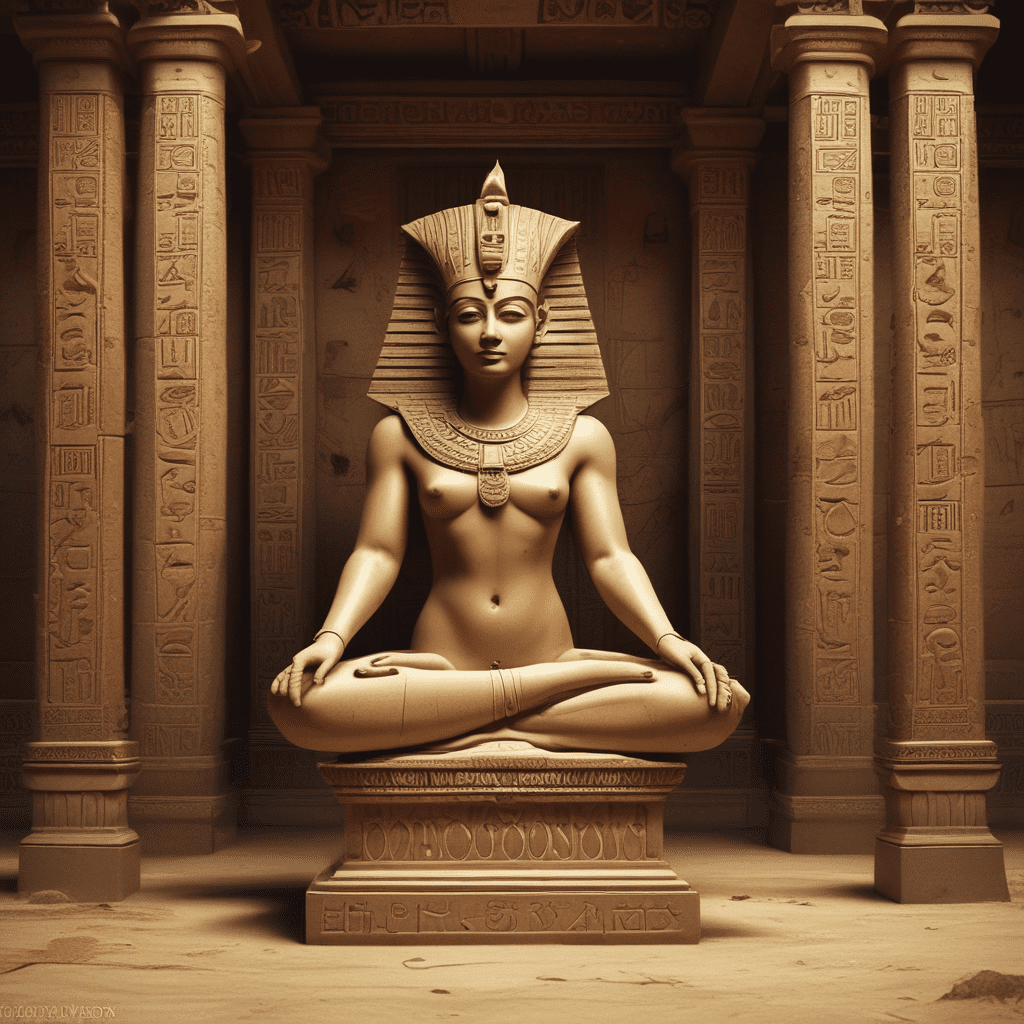The Myth of the Goddess Nut in Ancient Egypt
Who Was the Goddess Nut?
In ancient Egyptian mythology, Nut was the goddess of the sky, associated with protection, motherhood, and the cycle of life. She was often depicted as a woman arched over the earth, her body adorned with stars representing the night sky. Nut was considered one of the most important and revered deities, as she was believed to protect the deceased on their journey to the afterlife.
What Was Nut’s Role in Egyptian Mythology?
Nut was not only the goddess of the sky but also played a crucial role in the Egyptian creation myth. According to the myth, Nut was Geb, the earth god’s sister, and lover. Ra, the sun god, had decreed that Nut could not give birth to her children on any day of the year. To circumvent this ruling, Nut gambled with the moon god Thoth for extra light, successfully winning enough moonlight to create five additional days during the year. On these days, she gave birth to Osiris, Horus the Elder, Set, Isis, and Nephthys.
What Symbolism Did Nut Represent?
Nut’s depiction as the sky symbolizes protection, as she was believed to envelop and shield the earth and its inhabitants. Her role as the mother of important deities underlined her representation of motherhood, nurturing, and the cycle of life and death. Nut’s arched body was also indicative of her role in swallowing the sun each night to give birth to it again in the morning—a symbol of rebirth and renewal.
How Was Goddess Nut Revered in Ancient Egypt?
Ancient Egyptians held Nut in high esteem, invoking her protection, especially during times of spiritual significance such as death and the afterlife. The Book of the Dead, a collection of spells and incantations to guide the deceased through the afterlife, commonly featured representations of Nut. Temples and tombs often bore artwork portraying Nut watching over the deceased, ensuring their safe passage to the realm of the dead. Additionally, the worship of Nut symbolized the lasting connection between the sky, earth, and the eternal cycle of life.
FAQ about the Myth of the Goddess Nut in Ancient Egypt
Who is Goddess Nut in Ancient Egyptian mythology?
In Ancient Egyptian mythology, Goddess Nut is the sky goddess, often depicted as a woman adorned with stars arching over the earth. She is the daughter of Shu (god of air) and Tefnut (goddess of moisture) and the mother of Osiris, Isis, Set, and Nephthys.
What role does Goddess Nut play in Egyptian mythology?
Goddess Nut is a key figure in Egyptian mythology as the sky goddess who swallows the sun at night and gives birth to it each morning. She is also believed to protect the earth and its inhabitants. Nut’s elongated body stretched over the world symbolizes the heavens and the eternal cycle of day and night.
Why is Goddess Nut significant in Ancient Egyptian beliefs?
Goddess Nut’s significance lies in her role in the Egyptian cosmology as the sky goddess who oversees the passage of the sun and moon. She embodies the concept of rebirth and renewal, representing the cycle of life, death, and resurrection in Egyptian belief.
How is the mythology of Goddess Nut celebrated or honored today?
While Ancient Egyptian religious practices have largely faded, Goddess Nut is still honored symbolically in modern times through various artistic representations, museum exhibits, and academic studies exploring the rich mythology



